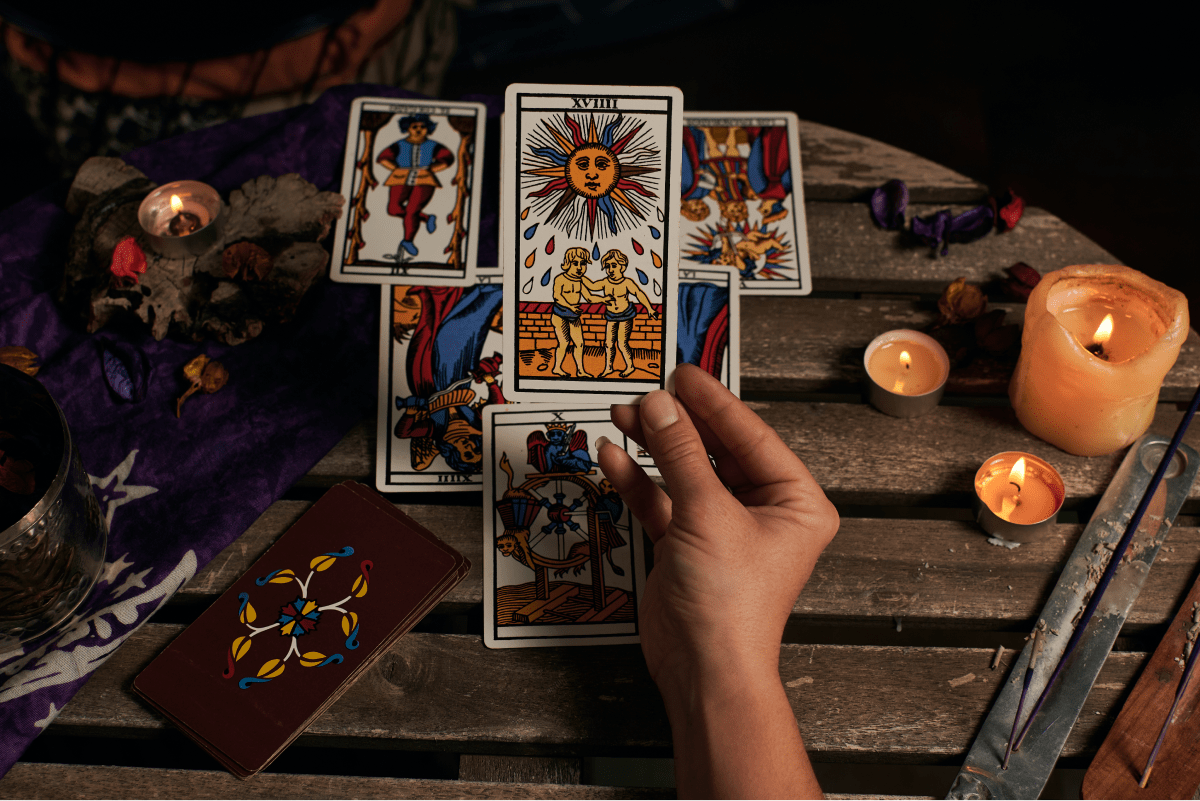Tarot cards have been used for centuries as a tool for divination, self-reflection, and spiritual guidance. Whether you’re a seasoned practitioner or a curious beginner, learning how to use tarot can unlock a world of insight and wisdom. Let’s explore the basics of tarot and discover how to harness its power for personal growth and clarity.
Understanding Tarot Cards
A standard tarot deck consists of 78 cards, divided into two main categories: the Major Arcana and the Minor Arcana.
- Major Arcana: These 22 cards represent significant life themes and archetypal energies, such as The Fool, The Magician, and The High Priestess. Each card carries deep symbolic meaning and represents universal truths and spiritual lessons.
- Minor Arcana: Comprising 56 cards divided into four suits (Cups, Pentacles, Swords, and Wands), the Minor Arcana reflects everyday experiences and challenges. Each suit corresponds to a different aspect of life, such as emotions, material concerns, thoughts, and actions.
Getting Started with Tarot
- Choose a Deck: Select a tarot deck that resonates with you aesthetically and intuitively. There are countless decks available, ranging from traditional Rider-Waite-Smith to contemporary and themed decks.
- Connect with Your Deck: Spend time familiarizing yourself with your tarot deck. Study each card’s imagery, symbolism, and meanings. Develop a personal connection with your cards through meditation, shuffling, and handling them regularly.
- Learn the Basics: Start with the basics of tarot, including card meanings, spreads, and interpretations. While memorizing card meanings is helpful, trust your intuition and allow your inner wisdom to guide your readings.
Performing a Tarot Reading
- Set the Intention: Before beginning a tarot reading, take a moment to center yourself and set a clear intention. Focus on the question or area of your life you’d like guidance on.
- Shuffle the Cards: Shuffle the deck while focusing on your question or intention. You can shuffle in any way that feels comfortable to you—overhand shuffle, riffle shuffle, or simply mix the cards with your hands.
- Draw Cards: When you feel ready, draw the cards for your reading. You can choose a specific spread (e.g., Celtic Cross, Three-Card Spread) or simply draw cards intuitively. Trust your intuition to guide you in selecting the right cards.
- Interpret the Cards: Examine each card in the spread and consider its individual meaning in relation to your question. Pay attention to the imagery, symbolism, and position of each card within the spread. Reflect on how the cards interact with one another to tell a cohesive story.
- Trust Your Intuition: While tarot cards offer guidance, remember that you are the ultimate interpreter of your readings. Trust your intuition and inner wisdom to uncover the messages and insights that resonate with you personally.
Tips for Tarot Beginners
- Start Small: Begin with simple spreads and focus on mastering the basics before delving into more complex readings.
- Keep a Tarot Journal: Record your tarot readings, insights, and interpretations in a journal. Documenting your journey can help you track your progress and deepen your understanding of the cards.
- Practice Regularly: Consistent practice is key to developing your tarot skills. Set aside time each day or week for tarot readings and reflection.
- Stay Open-Minded: Approach tarot with an open mind and heart. Embrace the journey of self-discovery and trust the guidance that the cards provide.
Conclusion
Tarot is a powerful tool for self-reflection, insight, and spiritual growth. By learning how to use tarot cards effectively, you can tap into your intuition, gain clarity on life’s challenges, and uncover hidden truths within yourself. Whether you’re seeking guidance, affirmation, or inspiration, tarot offers a rich and transformative experience that can illuminate your path and empower you to navigate life with confidence and wisdom.
